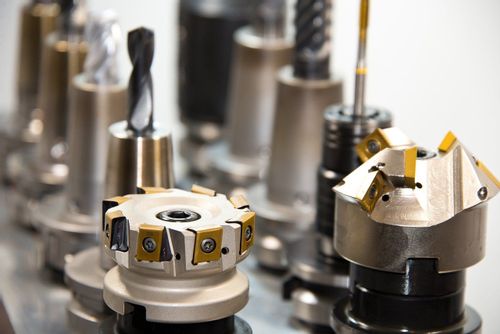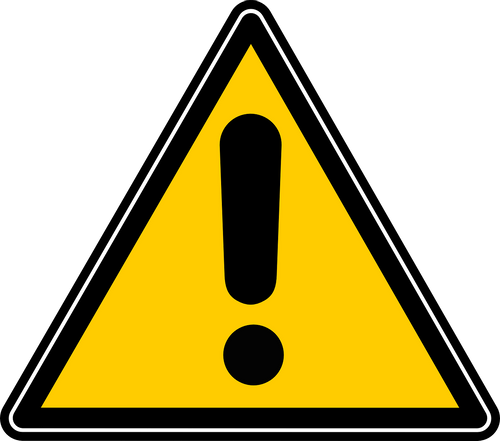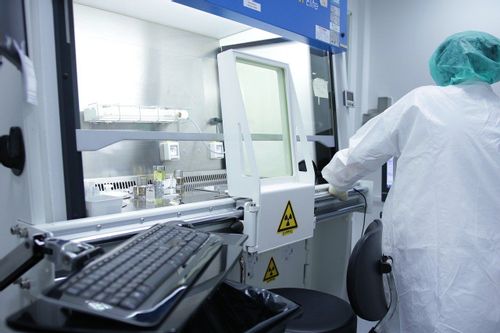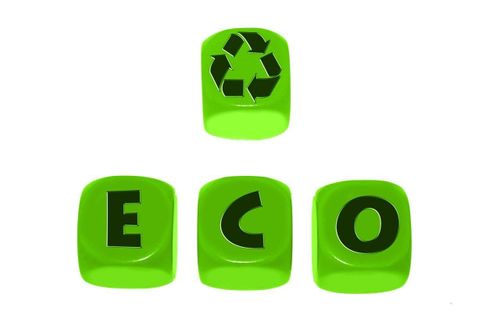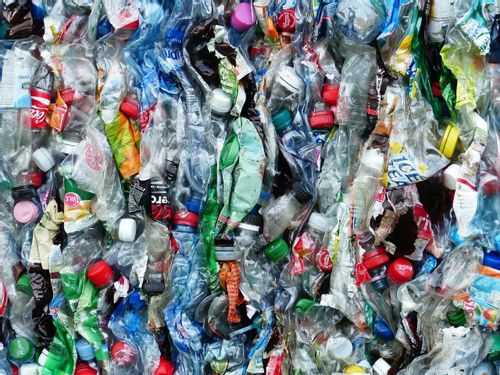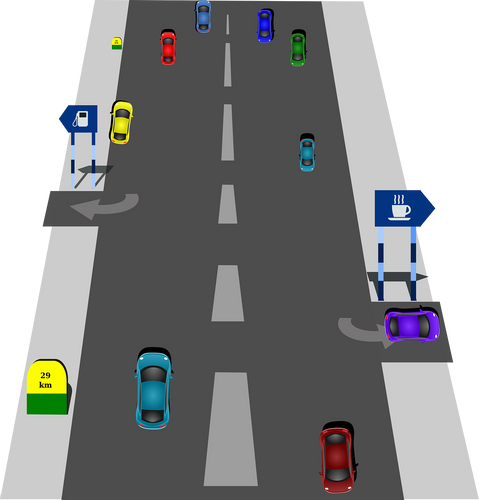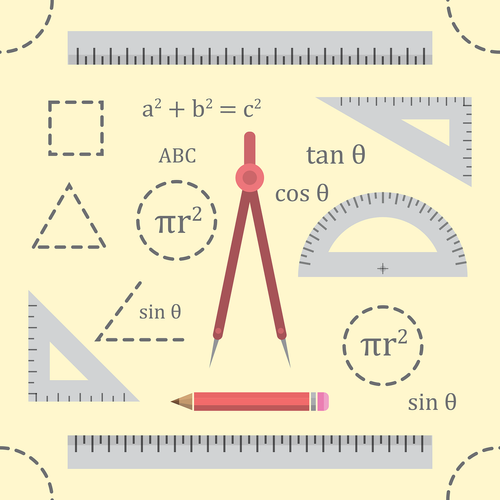Standards Packages
iTeh together with SIST has developed and compiled a comprehensive collection of standard packages to support your standard requirements. Our packages cover an array of content that includes quality management, risk management, road vehicles, machine safety, and much more. With over 200 packages to choose from, you are sure to find a collection to suit your standard needs.
Latest Standards
This document specifies a method for the determination of tap density, i.e. the density of a powder that has been tapped into a container under specified conditions.
- Standard13 pagesEnglish languagesale 10% offe-Library read for1 day
This document specifies the requirements and recommendations relative to the construction of a sectoral transition plan for industry decarbonization.
This document does not specify the requirements for the construction of a roadmap of single industrial company’s transition plan (a plant or a group), however, a sectoral transition plan can be used as a reference in an entity transition plan.
This document is intended to be used by organizations, including national and public bodies, trade associations, federations, companies and NGOs that wish to establish or monitor sectoral decarbonization plans.
This document is climate-programme neutral. If a climate programme is applicable, requirements of this programme are additional to the requirement of this document.
In this document, either natural or technological sequestrations occur inside the geographical and sectoral boundaries considered in the sectoral transition plan. Otherwise, they are excluded.
In this document, considering its energy consumption and its cost, the direct air capture and storage technology (DACS) is not considered relevant and is excluded from the sectoral transition plan.
Carbon offsets are excluded from this document.
NOTE Carbon offsets are intended as be understood as “Emissions reduction or removal resulting from an action outside the geographical and sectoral boundary used to counterbalance the sector’s residual emissions”.
- Standard43 pagesEnglish languagesale 10% offe-Library read for1 day
This document shows the relationship between the indicators in EN 17472 and ISO 21928-2, used to assess the environmental, social, and economic performance of civil engineering works (CEW), and the Sustainable Development Goals (SDGs), which can serve as a tool to communicate the results of the assessment carried out with the methodology established in EN 17472 and ISO 21928-2.
This document does not provide any criteria or rules for performing any kind of assessment.
This document also provides information about how the SDGs are influenced by the performance of several CEW, based on the results of the assessment done according to either EN 17472 or ISO 21928-2, or both, and demonstrate their contributions to achieving the SDGs targets.
The links provided can also be applied to address efforts towards satisfying specific SDGs.
- Technical report76 pagesEnglish languagesale 10% offe-Library read for1 day
This document specifies the technical delivery conditions for corrosion-resistant alloy seamless tubular products for casing, tubing, coupling stock and accessory material (including coupling stock and accessory material from bar) for two product specification levels:
PSL-1, which is the basis of this document;
PSL-2, which provides additional requirements for a product that is intended to be both corrosion and cracking resistant for the environments and qualification method specified in Annex G and in the ISO 15156 series.
At the option of the manufacturer, PSL-2 products can be provided in lieu of PSL-1.
NOTE 1 The corrosion-resistant alloys included in this document are special alloys in accordance with ISO 4948-1 and ISO 4948-2.
NOTE 2 For the purpose of this document, NACE MR0175 is equivalent to the ISO 15156 series.
NOTE 3 Accessory products can be manufactured from coupling stock and tubular material, or from solid bar stock or from bored and heat heat-treated bar stock as covered in Annex F.
This document contains no provisions relating to the connection of individual lengths of pipe. This document contains provisions relating to marking of tubing and casing after threading. This document is applicable to the following five groups of products:
a) group 1, which is composed of stainless alloys with a martensitic or martensitic/ferritic structure;
b) group 2, which is composed of stainless alloys with a ferritic-austenitic structure, such as duplex and super-duplex stainless alloy;
c) group 3, which is composed of stainless alloys with an austenitic structure (iron base);
d) group 4, which is composed of nickel-based alloys with an austenitic structure (nickel base);
e) group 5, which is composed of bar only (Annex F) in age-hardened (AH) nickel-based alloys with austenitic structure.
NOTE 4 Not all PSL-1 categories and grades can be made cracking resistant in accordance with the ISO 15156 series and are, therefore, not included in PSL-2.
- Standard130 pagesEnglish languagesale 10% offe-Library read for1 day
This document specifies a method for the determination of resistance to electrostatic energy for propellants containing a mass fraction of at least 5 % of particles which pass through a 1 mm sieve. This method does not apply to black powder.
NOTE If the mass fraction of particles smaller than 1 mm size is less than 5 % the propellant is considered to be insensitive to electrostatic energy and this test is not performed.
- Standard17 pagesEnglish languagesale 10% offe-Library read for1 day
This document specifies a method for the verification of the density of explosives for blasting, boosters and explosive substances.
This document also applies to solid gun propellants, solid rocket propellants, black powder used as propellants, as covered by EN 13938-1:2025.
- Standard10 pagesEnglish languagesale 10% offe-Library read for1 day
This document specifies two test methods for the verification of the insensitiveness to impact.
This document is applicable to electric detonators, non-electric detonators, electronic detonators, plain detonators, semi-finished detonators, surface connectors and detonating cord relays as well as shock tubes.
This document does not apply to electronic initiation systems.
- Standard16 pagesEnglish languagesale 10% offe-Library read for1 day
This document specifies a test method for the verification of the resistance to water of explosives for blasting and boosters.
NOTE This test method applies to situations where an explosive for blasting or a booster is subjected to high humidity and contact with water.
This document does not apply to black powder.
This document does not apply to explosive substances.
- Standard15 pagesEnglish languagesale 10% offe-Library read for1 day
- Amendment18 pagesEnglish languagesale 10% offe-Library read for1 day
This document specifies the general “design for recycling” guidelines for EPS raw materials. It provides guidance on the impact of specific design characteristics on the recyclability of the product in practice and recommended design options to ensure that the product is recyclable, including target values and performance ranges, where applicable. It also provides a definition of recyclable product and of design for recycling.
This document refers to EPS thermal insulation products but may be used for other EPS construction products where appropriate.
This document refers to the recycling processes of EPS insulation products. The sorting and collecting steps are not part of this document.
This document takes into account all currently known recycling processes that are suitable to enable the circular economy for insulation materials. Particular attention is paid to ensuring that the most energy-efficient processes are given preference, especially mechanical recycling.
For some of these processes, practical experience has been gained over many years, so a basic knowledge base for the development of a guideline is already available.
At the same time, it is important to also take into account future-oriented processes, for which at the moment little but increasing experience is available or which have so far only been implemented on a small scale.
- Standard13 pagesEnglish languagesale 10% offe-Library read for1 day
This document specifies minimum requirements for light-weight protectors designed to provide protection for the eyes or eyes and face from biological hazards, such as pathogenic micro-organisms in human or other animal bodily fluids that can deposit onto the face or eyes. NOTE 1 Typical scenarios for use include healthcare, retail and transport settings. This document specifies requirements for both single-use (disposable) and re-usable (disinfectable) products or components. This document applies to all afocal (plano) and prescription lensed protectors and their components. This document does not cover the respiratory equipment required for protection against aerosols, which can be used in conjunction with these eye protectors, and for which other standards apply. This document does not apply to — protectors intended for protection from specific hazards, e.g. mechanical hazards, harmful artificial optical radiation, dusts, molten metals, heat, flame, hot solids, harmful gases, vapours (refer to ISO 16321-1 to ISO 16321-3), — protectors specifically for sports (refer to the ISO 18527 series), — protectors for lasers (refer to ISO 19818-1), and — respiratory protection against aerosols (refer to ISO/TS 16975-4). NOTE 2 Guidance related to the specific selection, use and maintenance is provided in Annex A. NOTE 3 Where eye and face protection is incorporated in protective equipment, such as a hood, full face respirators, powered air purifying respirators (PAPR) hoods and headtops, the relevant requirements of this document apply to the components providing eye and face protection.
- Standard25 pagesEnglish languagesale 15% off
- Standard27 pagesFrench languagesale 15% off
This document defines a standardized accuracy and precision evaluation process for modelling from 3D scanned data. The set of processes, activities and tasks described in this document provides a common framework for evaluating quality factors such as accuracy and precision for modelling from 3D scanned data. This document is not intended to evaluate the 3D printed product itself.
- Standard25 pagesEnglish languagesale 15% off
This document specifies a method for determining the tear strength of leather using a double edged tear. The method is sometimes described as the Baumann tear. It is applicable to all types of leather.
- Standard3 pagesEnglish languagesale 15% off
- Standard4 pagesFrench languagesale 15% off
IEC 60072-2: 2025 covers the majority of rotating electrical machines for industrial purposes within the dimension range and output powers: - Foot-mounted: shaft heights: 355 mm to 1 000 mm. - Flange-mounted: pitch circle diameter of flange: 1 180 mm to 2 360 mm. It gives tables of fixing dimensions, shaft extension dimensions and their tolerances. However, the variety of construction and the wide range of applications for the large machines with shaft heights above 315 mm have led to the establishment of a relatively large number of values for the dimension in order to cover all possible constructions. Owing to this, the present part covers a wider range than IEC 60072-1 within which range values suitable for all designs or for a more detailed standardization can be chosen. NOTE The mounting dimensions given in this document for shaft heights 355 mm and 400 mm have been chosen from values given in IEC 60072-1. This second edition cancels and replaces the first edition published in 1990. This edition constitutes a technical revision. This edition includes the following significant technical changes with respect to the previous edition: a) complete revision on the basis of IEC 60072-1; b) additional tolerances and measurements for shafts and flanges (DIN SPEC 42955).
- Draft14 pagesEnglish languagesale 10% offe-Library read for1 day
IEC 61000-4-30:2025 defines the methods for measurement and interpretation of results for power quality parameters in AC power supply systems with a declared fundamental frequency of 50 Hz or 60 Hz. Measurement methods are described for each relevant parameter in terms that give reliable and repeatable results, regardless of the method’s implementation. This document addresses measurement methods for in-situ measurements. This document covers two classes of measurement methods (Class A and Class S). The classes of measurement are specified in Clause 4.
NOTE 1 In this document, “A” stands for “advanced” and “S” stands for “surveys”.
Measurement of parameters covered by this document is limited to conducted phenomena in power systems. The power quality parameters considered in this document are power frequency, magnitude of the supply voltage, flicker, supply voltage dips and swells, voltage interruptions, transient voltages, supply voltage unbalance, voltage harmonics and interharmonics, rapid voltage changes, mains communicating system (MCS) voltages, magnitude of current, harmonic currents, interharmonic currents and current unbalance. Emissions in the 2 kHz to 150 kHz range are considered in Annex C and Annex D. Depending on the purpose of the measurement, all or a subset of the phenomena on this list can be measured.
NOTE 2 Test methods for verifying compliance with this document can be found in IEC 62586-2.
NOTE 3 The effects of transducers inserted between the power system and the instrument are acknowledged but not addressed in detail in this document. Guidance about effects of transducers can be found IEC TR 61869-103.
This fourth edition cancels and replaces the third edition published in 2015. This edition constitutes a technical revision.This edition includes the following significant technical changes with respect to the previous edition:
a) IEC 61000-4-30:2015/AMD1:2021 and IEC 61000-4-30:2015/COR1:2016 were included.
b) The measurement method for rapid voltage changes (RVC) has been corrected and extended.
c) The measurement method for voltage events has been updated and extended.
d) Annex C was divided into 2 parts:
1) Annex C: The measurement method from IEC 61000-4-7:2002 and IEC 61000‑4‑7:2002/AMD1:2008, Annex B for conducted emissions in the 2 kHz to 9 kHz range has been separate
2) Annex D: A new measurement method for conducted emissions in the 9 kHz to 150 kHz range has been added.
e) Annex D (underdeviation and overdeviation parameters) was removed.
f) Annex E (Class B) was removed.
- Standard95 pagesEnglish languagesale 15% off
- Standard102 pagesFrench languagesale 15% off
- Standard197 pagesEnglish and French languagesale 15% off
IEC 60079-18:2025 gives the specific requirements for the construction, testing and marking of electrical Ex Equipment, parts of electrical Ex Equipment and Ex Components with the Type of Protection encapsulation "m" (hereinafter referred to as "m" Equipment) intended for use in explosive gas atmospheres or explosive dust atmospheres. For Levels of Protection "mb" and "mc", this document applies where the rated voltage does not exceed 11 kV ACRMS or DC. For Level of Protection "ma", this document applies where the rated voltage does not exceed 1 kV ACRMS or DC. This document does not take account of any hazard due to an emission of flammable or toxic gas from the dust. This document supplements and modifies the general requirements of IEC 60079-0. Where a requirement of this document conflicts with a requirement of IEC 60079-0, the requirement of this document takes precedence. This fifth edition cancels and replaces the fourth edition published in 2014 and Amendment 1:2017. This edition constitutes a technical revision. This International Standard is to be used in conjunction with IEC 60079-0, Explosive atmospheres - Part 0: Equipment - General requirements. Users of this document are advised that interpretation sheets clarifying the interpretation of this document can be published. Interpretation sheets are available from the IEC webstore and can be found in the "history" tab of the page for each document. Please see the foreword to this document for the list of significant technical changes with respect to the previous edition.
- Draft34 pagesEnglish languagesale 10% offe-Library read for1 day
This document describes the type, layout, location, and feedback display of available electro-mechanical and electronic transmission gear shifters found in passenger cars (including sport utility vehicles and light trucks) and in commercial vehicles (including heavy trucks and buses). The transmission gear shifters are located on the steering column, instrument panel, floor and centre consoles. Specifically, this document addresses shift by-wire electro-mechanical selectors that adapt the control of vehicle movement according to road conditions and personal preference. Conventional mechanical shifters are also referenced so correspondence between traditional linear P, R, N, D, L, M/S control types, layouts, locations and direction of control motions and electro-mechanical/electronic transmission gear shifters (simply, e-shifters) can be established. This document is based on observations and survey results described in Annexes A and B for passenger cars and commercial vehicles respectively. The results are independent of vehicle propulsion systems and define the layout, spatial orientation and control movement patterns for the following drive functions: — drive (D=forward movement), — reverse (R=rearward movement), — park (P=stationary), — neutral (N=freewheeling to allow stationary or forward-reverse without drive functions engaged), — low (L=remain in low gear),and/or — manual or sequential (M or S to engage manual drive mode). The control types of the transmission gear shifters that are within scope of this document are lever (pivot, slider and gated), dial/rotary, push button and toggle switch. Paddle shifters and ‘automatic-manual shifters’ are not specifically included in the scope. However, they are referenced so that if a transmission gear shifter has a ‘manual mode’ by which drive gear control is transferred to or shared with the paddle or automatic-manual transmission it is identified. This document also identifies control types, location and feedback displays of drive mode selectors. Their control types within scope are lever, dial/rotary, push button, toggle/rocker switch, touch screen and steering wheel paddle switches. These are located in the centre console, steering wheel or instrument panel of the vehicle. Various types of visual, auditory or haptic feedback correspond to display activations, control positions, and graphical representations in the head-up display, centre console, instrument panel, display audio or instrument cluster display. This document does not specifically include head-up displays, but it is foreseeable that graphical representations could appear in future head-up displays. Leaving the limitations of mechanical shifters means control freedom gets bigger. It is therefore likely that control types as well as the combination of transmission and brake functions will continue to develop. In this document, specific details about hybrid or electric drives are excluded. The same is in general valid for engine brake, auxiliary brake, or regeneration/recuperation programs. However, brake functions are to some extent still mentioned as part of drive modes found in the surveys. For commercial vehicles, and with the continued introduction of electric drivelines, these brake programs are likely to get even more related to different drive modes. It is foreseen that more information can be added at later stage, as separate ISO documents.
- Technical report57 pagesEnglish languagesale 15% off
This document establishes the minimum performance requirements and tests for seat-belt assemblies and seat-belt anchorages on earth-moving machinery, necessary to restrain an occupant within a roll-over protective structure (ROPS) in the event of a machine roll-over (see ISO 3471:2008, ISO 12117-2:2008/Amd 1:2016, and ISO 13459:2012/Amd 1:2022), or within a tip-over protection structure (TOPS) in the event of a machine tip-over (see ISO 12117:1997). This document is not applicable to seat-belt assemblies and seat-belt anchorages manufactured before the date of its publication.
- Standard10 pagesEnglish languagesale 15% off
- Standard10 pagesFrench languagesale 15% off
This document specifies the functions and quality evaluation of the specimen collection booth as part of pandemic response management for respiratory diseases. NOTE COVID-19 is an example of a disease for which such a specimen-collection booth is developed.
- Standard18 pagesEnglish languagesale 15% off
This document specifies the characteristics for suspension diaphragms to achieve, together with applicable inspection and test methods to be carried out for verification. An air spring system usually consists of a diaphragm (subject of this document) and additional components such as either emergency or additional springs, or both, and other assembly parts. This document does not detail the other components of air suspension or control systems such as air reservoirs, air piping, levelling system, frames, stiffeners, emergency suspension systems or elastic supports (such as series springs), etc., which will affect the diaphragm performance. This document applies to suspension diaphragms (inflated with air) designed to be fitted on railway vehicles and similar vehicles running on dedicated tracks with permanent guide systems, whatever the type of rail and the running surface. These parts are typically made with elastomer, textile fabrics and metallic beads.
- Standard43 pagesEnglish languagesale 15% off
- Standard46 pagesFrench languagesale 15% off
Benefits

Full Standards Solution
Our catalog includes not only latest standards but also full meta information about related standardization project lifecycle.

Cost Effective
Our PRICE MATCH GUARANTEE policy with multi-level volume discounts gives our clients the best option in the market. In addition, you can get access to the standards for 3, 10, or 30 days.

Stay Notified
Get alerted to the latest revisions and new standards in the Weekly Newsletter. Standards are constantly changing. Don’t miss a revision that can impact your business.
About Us
iTeh Inc is a software development and IT consulting team of professionals who provide consulting, development and implementation of solutions for all types of businesses.
In cooperation, with the Slovenian Institute of Standardization (SIST), we create a unique solution that covers all aspects of the lifecycle of Standardization organizations. iTeh Standards is a part of the solution that helps SIST to provide and sell their products to Customers.
iTeh Standards Store is an evolving project, our goal is to build long-term relationships with our customers. We believe in delivering quality services to solve our customers' challenges and define success by exceeding our customers' expectations. We are always ready to listen and our experience allows us to provide our customers with helpful effective suggestions. You can contact us by email.
We are committed to providing the best possible experience for our customers.
Compliance with international standards is increasingly becoming one of the key competitive advantages in the global market. Our company creates all conditions for the most comfortable implementation of new documents and norms in the processes carried out by your organization. Some of the key advantages of working with us are:
- Cost-effective - multi-level discounts and permanent updates of the functions give our clients the best option on the market.
- e-Library - access to standards for a period of time of your choice. It is a cost-effective solution for keeping updated with the newest standards.
- Company-wide documents - create a company account and connect all employees with access to purchased standards, e-Library documents, and packages.
- All in one spot - all purchased standards are kept in one place with controlled access by the account administrator.
- Client-centric - providing quality consulting is the prerogative and incentive to create new products that accompany your success and scale.
- 24 / 7 client support
We are dedicated to building mutually beneficial and long-term relationships with our clients. That is why our team focuses on creating services to help our customers develop and achieve new productive results.










